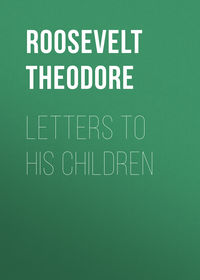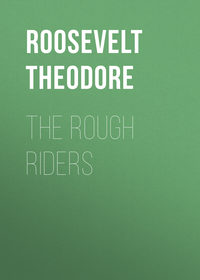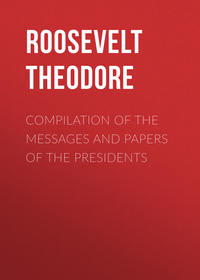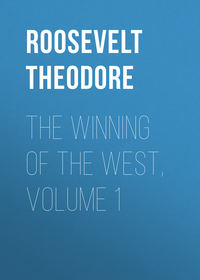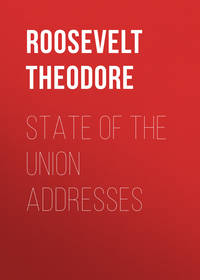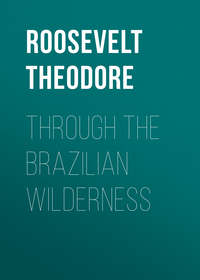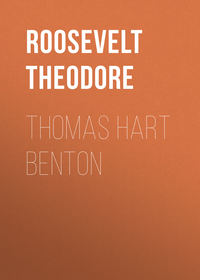 полная версия
полная версияAfrican and European Addresses
Before illustrating these types, let us settle one or two matters of terminology. In the changes, the development and extinction, of species we must remember that such expressions as "a new species," or as "a species becoming extinct," are each commonly and indiscriminately used to express totally different and opposite meanings. Of course the "new" species is not new in the sense that its ancestors appeared later on the globe's surface than those of any old species tottering to extinction. Phylogenetically, each animal now living must necessarily trace its ancestral descent back through countless generations, through æons of time, to the early stages of the appearance of life on the globe. All that we mean by a "new" species is that from some cause, or set of causes, one of these ancestral stems slowly or suddenly develops into a form unlike any that has preceded it; so that while in one form of life the ancestral type is continuously repeated and the old species continues to exist, in another form of life there is a deviation from the ancestral type and a new species appears.
Similarly, "extinction of species" is a term which has two entirely different meanings. The type may become extinct by dying out and leaving no descendants. Or it may die out because as the generations go by there is change, slow or swift, until a new form is produced. Thus in one case the line of life comes to an end. In the other case it changes into something different. The huge titanothere, and the small three-toed horse, both existed at what may roughly be called the same period of the world's history, back in the middle of the mammalian age. Both are extinct in the sense that each has completely disappeared and that nothing like either is to be found in the world to-day. But whereas all the individual titanotheres finally died out, leaving no descendants, a number of the three-toed horses did leave descendants, and these descendants, constantly changing as the ages went by, finally developed into the highly specialized one-toed horses, asses, and zebras of to-day.
The analogy between the facts thus indicated and certain facts in the development of human societies is striking. A further analogy is supplied by a very curious tendency often visible in cases of intense and extreme specialization. When an animal form becomes highly specialized, the type at first, because of its specialization, triumphs over its allied rivals and its enemies, and attains a great development; until in many cases the specialization becomes so extreme that from some cause unknown to us, or at which we merely guess, it disappears. The new species which mark a new era commonly come from the less specialized types, the less distinctive, dominant, and striking types, of the preceding era.
When dealing with the changes, cataclysmic or gradual, which divide one period of palæontological history from another, we can sometimes assign causes, and again we cannot even guess at them. In the case of single species, or of faunas of very restricted localities, the explanation is often self-evident. A comparatively slight change in the amount of moisture in the climate, with the attendant change in vegetation, might readily mean the destruction of a group of huge herbivores with a bodily size such that they needed a vast quantity of food, and with teeth so weak or so peculiar that but one or two kinds of plants could furnish this food. Again, we now know that the most deadly foes of the higher forms of life are various lower forms of life, such as insects, or microscopic creatures conveyed into the blood by insects. There are districts in South America where many large animals, wild and domestic, cannot live because of the presence either of certain ticks or of certain baleful flies. In Africa there is a terrible genus of poison fly, each species acting as the host of microscopic creatures which are deadly to certain of the higher vertebrates. One of these species, though harmless to man, is fatal to all domestic animals, and this although harmless to the closely-related wild kinsfolk of these animals. Another is fatal to man himself, being the cause of the "sleeping sickness" which in many large districts has killed out the entire population. Of course the development or the extension of the range of any such insects, and any one of many other causes which we see actually at work around us, would readily account for the destruction of some given species or even for the destruction of several species in a limited area of country.
When whole faunal groups die out over large areas, the question is different, and may or may not be susceptible of explanation with the knowledge we actually possess. In the old arctogæal continent, for instance, in what is now Europe, Asia, and North America, the glacial period made a complete, but of course explicable, change in the faunal life of the region. At one time the continent held a rich and varied fauna. Then a period of great cold supervened, and a different fauna succeeded the first. The explanation of the change is obvious.
But in many other cases we cannot so much as hazard a guess at why a given change occurred. One of the most striking instances of these inexplicable changes is that afforded by the history of South America towards the close of the tertiary period. For ages South America had been an island by itself, cut off from North America at the very time that the latter was at least occasionally in land communication with Asia. During this time a very peculiar fauna grew up in South America, some of the types resembling nothing now existing, while others are recognizable as ancestral forms of the ant-eaters, sloths, and armadillos of to-day. It was a peculiar and diversified mammalian fauna, of, on the whole, rather small species, and without any representatives of the animals with which man has been most familiar during his career on this earth.
Towards the end of the tertiary period there was an upheaval of land between this old South American island and North America, near what is now the Isthmus of Panama, thereby making a bridge across which the teeming animal life of the northern continent had access to this queer southern continent. There followed an inrush of huge, or swift, or formidable creatures which had attained their development in the fierce competition of the arctogæal realm. Elephants, camels, horses, tapirs, swine, sabre-toothed tigers, big cats, wolves, bears, deer, crowded into South America, warring each against the other incomers and against the old long-existing forms. A riot of life followed. Not only was the character of the South American fauna totally changed by the invasion of these creatures from the north, which soon swarmed over the continent, but it was also changed through the development wrought in the old inhabitants by the severe competition to which they were exposed. Many of the smaller or less capable types died out. Others developed enormous bulk or complete armor protection, and thereby saved themselves from the new beasts. In consequence, South America soon became populated with various new species of mastodons, sabre-toothed tigers, camels, horses, deer, cats, wolves, hooved creatures of strange shapes and some of them of giant size, all of these being descended from the immigrant types; and side by side with them there grew up large autochthonous [TR: original autochthonus] ungulates, giant ground sloths well-nigh as large as elephants, and armored creatures as bulky as an ox but structurally of the armadillo or ant-eater type; and some of these latter not only held their own, but actually in their turn wandered north over the isthmus and invaded North America. A fauna as varied as that of Africa to-day, as abundant in species and individuals, even more noteworthy, because of its huge size or odd type, and because of the terrific prowess of the more formidable flesh-eaters, was thus developed in South America, and flourished for a period which human history would call very long indeed, but which geologically was short.
Then, for no reason that we can assign, destruction fell on this fauna. All the great and terrible creatures died out, the same fate befalling the changed representatives of the old autochthonous fauna and the descendants of the migrants that had come down from the north. Ground sloth and glyptodon, sabre-tooth, horse and mastodon, and all the associated animals of large size, vanished, and South America, though still retaining its connection with North America, once again became a land with a mammalian life small and weak compared to that of North America and the Old World. Its fauna is now marked, for instance, by the presence of medium-sized deer and cats, fox-like wolves, and small camel-like creatures, as well as by the presence of small armadillos, sloths, and ant-eaters. In other words, it includes diminutive representatives of the giants of the preceding era, both of the giants among the older forms of mammalia, and of the giants among the new and intrusive kinds. The change was widespread and extraordinary, and with our present means of information it is wholly inexplicable. There was no ice age, and it is hard to imagine any cause which would account for the extinction of so many species of huge or moderate size, while smaller representatives, and here and there medium-sized representatives, of many of them were left.
Now as to all of these phenomena in the evolution of species, there are, if not homologies, at least certain analogies, in the history of human societies, in the history of the rise to prominence, of the development and change, of the temporary dominance, and death or transformation, of the groups of varying kind which form races or nations. Here, as in biology, it is necessary to keep in mind that we use each of the words "birth" and "death," "youth" and "age," often very loosely, and sometimes as denoting either one of two totally different conceptions. Of course, in one sense there is no such thing as an "old" or a "young" nation, any more than there is an "old" or "young" family. Phylogenetically, the line of ancestral descent must be of exactly the same length for every existing individual, and for every group of individuals, whether forming a family or a nation. All that can properly be meant by the terms "new" and "young" is that in a given line of descent there has suddenly come a period of rapid change. This change may arise either from a new development or transformation of the old elements, or else from a new grouping of these elements with other and varied elements; so that the words "new" nation or "young" nation may have a real difference of significance in one case from what they have in another.
As in biology, so in human history, a new form may result from the specialization of a long-existing, and hitherto very slowly changing, generalized or non-specialized form; as, for instance, occurs when a barbaric race from a variety of causes suddenly develops a more complex cultivation and civilization. This is what occurred, for instance, in Western Europe during the centuries of the Teutonic and, later, the Scandinavian ethnic overflows from the north. All the modern countries of Western Europe are descended from the states created by these northern invaders. When first created they would be called "new" or "young" states in the sense that part or all of the people composing them were descended from races that hitherto had not been civilized, and that therefore, for the first time, entered on the career of civilized communities. In the southern part of Western Europe the new states thus formed consisted in bulk of the inhabitants already in the land under the Roman Empire; and it was here that the new kingdoms first took shape. Through a reflex action their influence then extended back into the cold forests from which the invaders had come, and Germany and Scandinavia witnessed the rise of communities with essentially the same civilization as their southern neighbors; though in those communities, unlike the southern communities, there was no infusion of new blood, so that the new civilized nations which gradually developed were composed entirely of members of the same races which in the same regions had for ages lived the life of a slowly changing barbarism. The same was true of the Slavs and the slavonized Finns of Eastern Europe, when an infiltration of Scandinavian leaders from the north, and an infiltration of Byzantine culture from the south, joined to produce the changes which have gradually, out of the little Slav communities of the forest and the steppe, formed the mighty Russian Empire of to-day.
Again, the new form may represent merely a splitting off from a long established, highly developed, and specialized nation. In this case the nation is usually spoken of as a "young," and is correctly spoken of as a "new," nation; but the term should always be used with a clear sense of the difference between what is described in such case, and what is described by the same term in speaking of a civilized nation just developed from barbarism. Carthage and Syracuse were new cities compared to Tyre and Corinth; but the Greek or Phoenician race was in every sense of the word as old in the new city as in the old city. So, nowadays, Victoria or Manitoba is a new community compared with England or Scotland; but the ancestral type of civilization and culture is as old in one case as in the other. I of course do not mean for a moment that great changes are not produced by the mere fact that the old civilized race is suddenly placed in surroundings where it has again to go through the work of taming the wilderness, a work finished many centuries before in the original home of the race; I merely mean that the ancestral history is the same in each case. We can rightly use the phrase "a new people," in speaking of Canadians or Australians, Americans or Afrikanders. But we use it in an entirely different sense from that in which we use it when speaking of such communities as those founded by the Northmen and their descendants during that period of astonishing growth which saw the descendants of the Norse sea-thieves conquer and transform Normandy, Sicily, and the British Islands; we use it in an entirely different sense from that in which we use it when speaking of the new states that grew up around Warsaw, Kief, Novgorod, and Moscow, as the wild savages of the steppes and the marshy forests struggled haltingly and stumblingly upward to become builders of cities and to form stable governments. The kingdoms of Charlemagne and Alfred were "new," compared to the empire on the Bosphorus; they were also in every way different; their lines of ancestral descent had nothing in common with that of the polyglot realm which paid tribute to the Cæsars of Byzantium; their social problems and after-time history were totally different. This is not true of those "new" nations which spring direct from old nations. Brazil, the Argentine, the United States, are all "new" nations, compared with the nations of Europe; but, with whatever changes in detail, their civilization is nevertheless of the general European type, as shown in Portugal, Spain, and England. The differences between these "new" American and these "old" European nations are not as great as those which separate the "new" nations one from another, and the "old" nations one from another. There are in each case very real differences between the new and the old nation; differences both for good and for evil; but in each case there is the same ancestral history to reckon with, the same type of civilization, with its attendant benefits and shortcomings; and, after the pioneer stages are passed, the problems to be solved, in spite of superficial differences, are in their essence the same; they are those that confront all civilized peoples, not those that confront only peoples struggling from barbarism into civilization.
So, when we speak of the "death" of a tribe, a nation, or a civilization, the term may be used for either one of two totally different processes, the analogy with what occurs in biological history being complete. Certain tribes of savages—the Tasmanians, for instance, and various little clans of American Indians—have within the last century or two completely died out; all of the individuals have perished, leaving no descendants, and the blood has disappeared. Certain other tribes of Indians have as tribes disappeared or are now disappearing; but their blood remains, being absorbed into the veins of the white intruders, or of the black men introduced by those white intruders; so that in reality they are merely being transformed into something absolutely different from what they were. In the United States, in the new State of Oklahoma, the Creeks, Cherokees, Chickasaws, Delawares, and other tribes, are in process of absorption into the mass of the white population; when the State was admitted a couple of years ago, one of the two Senators, and three of the five Representatives in Congress, were partly of Indian blood. In but a few years these Indian tribes will have disappeared as completely as those that have actually died out; but the disappearance will be by absorption and transformation into the mass of the American population.
A like wide diversity in fact may be covered in the statement that a civilization has "died out." The nationality and culture of the wonderful city-builders of the lower Mesopotamian Plain have completely disappeared, and, though doubtless certain influences dating therefrom are still at work, they are in such changed and hidden form as to be unrecognizable. But the disappearance of the Roman Empire was of no such character. There was complete change, far-reaching transformation, and at one period a violent dislocation; but it would not be correct to speak either of the blood or the culture of Old Rome as extinct. We are not yet in a position to dogmatize as to the permanence or evanescence of the various strains of blood that go to make up every civilized nationality; but it is reasonably certain that the blood of the old Roman still flows through the veins of the modern Italian; and though there has been much intermixture, from many different foreign sources—from foreign conquerors and from foreign slaves—yet it is probable that the Italian type of to-day finds its dominant ancestral type in the ancient Latin. As for the culture, the civilization of Rome, this is even more true. It has suffered a complete transformation, partly by natural growth, partly by absorption of totally alien elements, such as a Semitic religion, and certain Teutonic governmental and social customs; but the process was not one of extinction, but one of growth and transformation, both from within and by the accretion of outside elements. In France and Spain the inheritance of Latin blood is small; but the Roman culture which was forced on those countries has been tenaciously retained by them, throughout all their subsequent ethnical and political changes, as the basis on which their civilizations have been built. Moreover, the permanent spreading of Roman influence was not limited to Europe. It has extended to and over half of that New World which was not even dreamed of during the thousand years of brilliant life between the birth and the death of Pagan Rome. This New World was discovered by one Italian, and its mainland first reached and named by another; and in it, over a territory many times the size of Trajan's empire, the Spanish, French, and Portuguese adventurers founded, beside the St. Lawrence and the Amazon, along the flanks of the Andes and in the shadow of the snow-capped volcanoes of Mexico, from the Rio Grande to the Straits of Magellan, communities, now flourishing and growing apace, which in speech and culture, and even as regards one strain in their blood, are the lineal heirs of the ancient Latin civilization. When we speak of the disappearance, the passing away, of ancient Babylon or Nineveh, and of ancient Rome, we are using the same terms to describe totally different phenomena.
The anthropologist and historian of to-day realize much more clearly than their predecessors of a couple of generations back how artificial most great nationalities are, and how loose is the terminology usually employed to describe them. There is an element of unconscious and rather pathetic humor in the simplicity of half a century ago which spoke of the Aryan and the Teuton with reverential admiration, as if the words denoted, not merely something definite, but something ethnologically sacred; the writers having much the same pride and faith in their own and their fellow-countrymen's purity of descent from these imaginary Aryan or Teutonic ancestors that was felt a few generations earlier by the various noble families who traced their lineage direct to Odin, Æneas, or Noah. Nowadays, of course, all students recognize that there may not be, and often is not, the slightest connection between kinship in blood and kinship in tongue. In America we find three races, white, red, and black, and three tongues, English, French, and Spanish, mingled in such a way that the lines of cleavage of race continually run at right angles to the lines of cleavage of speech; there being communities practically of pure blood of each race found speaking each language. Aryan and Teutonic are terms having very distinct linguistic meanings; but whether they have any such ethnical meanings as were formerly attributed to them is so doubtful, that we cannot even be sure whether the ancestors of most of those we call Teutons originally spoke an Aryan tongue at all. The term Celtic, again, is perfectly clear when used linguistically; but when used to describe a race it means almost nothing until we find out which one of several totally different terminologies the writer or speaker is adopting. If, for instance, the term is used to designate the short-headed, medium-sized type common throughout middle Europe, from east to west, it denotes something entirely different from what is meant when the name is applied to the tall, yellow-haired opponents of the Romans and the later Greeks; while if used to designate any modern nationality, it becomes about as loose and meaningless as the term Anglo-Saxon itself.
Most of the great societies which have developed a high civilization and have played a dominant part in the world have been—and are—artificial; not merely in social structure, but in the sense of including totally different race types. A great nation rarely belongs to any one race, though its citizens generally have one essentially national speech. Yet the curious fact remains that these great artificial societies acquire such unity that in each one all the parts feel a subtle sympathy, and move or cease to move, go forward or go back, all together, in response to some stir or throbbing, very powerful, and yet not to be discerned by our senses. National unity is far more apt than race unity to be a fact to reckon with; until indeed we come to race differences as fundamental as those which divide from one another the half-dozen great ethnic divisions of mankind, when they become so important that differences of nationality, speech, and creed sink into littleness.
An ethnological map of Europe in which the peoples were divided according to their physical and racial characteristics, such as stature, coloration, and shape of head, would bear no resemblance whatever to a map giving the political divisions, the nationalities, of Europe; while on the contrary a linguistic map would show a general correspondence between speech and nationality. The northern Frenchman is in blood and physical type more nearly allied to his German-speaking neighbor than to the Frenchman of the Mediterranean seaboard; and the latter, in his turn, is nearer to the Catalan than to the man who dwells beside the Channel or along the tributaries of the Rhine. But in essential characteristics, in the qualities that tell in the make-up of a nationality, all these kinds of Frenchmen feel keenly that they are one, and are different from all outsiders, their differences dwindling into insignificance, compared with the extraordinary, artificially produced, resemblances which bring them together and wall them off from the outside world. The same is true when we compare the German who dwells where the Alpine springs of the Danube and the Rhine interlace, with the physically different German of the Baltic lands. The same is true of Kentishman, Cornishman, and Yorkshireman in England.
In dealing, not with groups of human beings in simple and primitive relations, but with highly complex, highly specialized, civilized, or semi-civilized societies, there is need of great caution in drawing analogies with what has occurred in the development of the animal world. Yet even in these cases it is curious to see how some of the phenomena in the growth and disappearance of these complex, artificial groups of human beings resemble what has happened in myriads of instances in the history of life on this planet.




